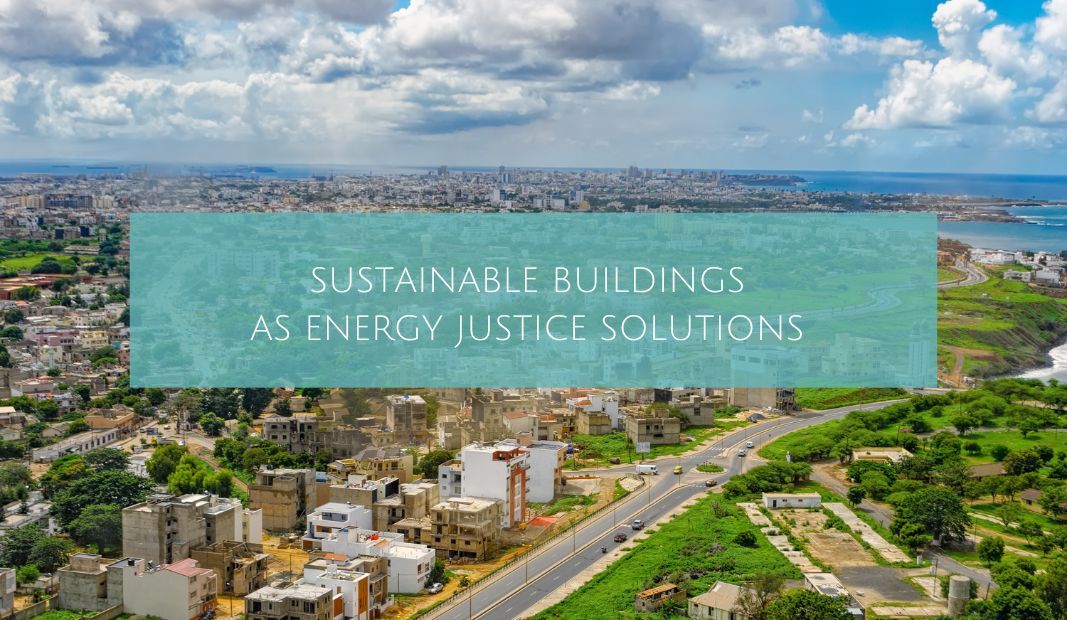Unlocking the potential of Sustainable buildings as a win-win solution in Africa
By: Mugure Njendu
Buildings are where we work, sleep, eat, and rest, and where most people spend about 90% of their time – and yet they don’t make it into conversations around energy justice. Buildings are also significant drivers of climate change, contributing to 34 percent of global energy demand and 37 percent of energy and process-related carbon dioxide (CO2) emissions. It is hard to imagine energy justice without sustainable buildings. Sustainable buildings provide economic opportunities through the reduction of energy costs and drive down greenhouse gas emissions as global temperatures rise.
There is a growing body of evidence that shows that sustainable buildings have significant non-climate benefits including significant health outcomes. GBPN has been developing this evidence base for healthy buildings, through programs like its Healthy Buildings Healthy Lives Program. By developing a white paper of policy recommendations to improve health and well-being for low-income housing in India, and integrating provisions for low-carbon cooling, GBPN has the opportunity to influence better health outcomes for the 30 million new affordable housing units that are in the pipeline in India.
GBPN’s bottom-up policy reform strategy is a key pathway to ensuring sustainable buildings are future climate-proof and respond to existing energy injustices in the Global South. Living in sustainable housing should not be a privilege–it should be a fundamental human right– especially, in the context of global heating and the climate emergency.
The Green Jobs Opportunity in africa
About 70% of building stock in Africa is yet to be built. With rapid urbanisation, population growth, and housing deficits across the continent, the opportunity for green jobs in the buildings and construction sector is massive. Job postings for ‘green’ jobs are growing nearly twice as fast as the number of workers with the skills to fill them, which makes the time for training on the African continent ripe.
The development of the right human capital and talent depends on climate leadership to guide this. Green jobs are more than just an opportunity for economic recovery, they are the key to building a sustainable, thriving Africa. But this transition needs leaders who can push boundaries, ignite innovation, and transform ideas into action.
It’s time for all hands on deck
The theme at New York Climate Week this year–It’s Time–recognised the urgency for climate action at all levels:
Market transformation
Climate leadership can advocate for industry provision of the skills required to equip the workforce towards the delivery of sustainable buildings. This can include training in technological innovations or building materials that may be new in markets. Governments can provide incentives for the private sector to invest in green buildings and infrastructure, creating more jobs.
Funding
Effective, responsible and trustworthy climate leadership can affect and promote fundraising and capital availability for upskilling and training for green jobs on the Continent. Funders can empower local communities and NGOs to advocate for their needs in the development of green building roadmaps. Investing in local expertise and bottom-up and people-centred change has a lasting potential in developing place-based solutions.
Value Chain Transformation
Support and administrative roles are essential in delivering technical buildings and infrastructure delivery. Addressing skill gaps in finance, human resources, administration, technology, and business operations is essential climate leadership in creating an ecosystem of green jobs in the sector.
Policy reform
Strong and supportive policy reforms ensure green jobs are sustainable and supported by legislation. In the built environment, this includes building codes that support and promote energy efficiency and a more inclusive approach to materials re-use and traditional African methods that may have been climate-friendly.
Strengthening Educational Institutions
Strong climate leadership in schools of built environment and professional training centres can ensure that skill gaps are met in addressing low-carbon materials, energy efficiency in buildings, and water management for climate action.
Share This Story, Choose Your Platform!
Stay in touch with how we’re transforming the buildings sector
GBPN runs innovative building policy reform programs in key regions around the world that aim to tackle the climate emergency by decarbonising the buildings sector. Stay up to date with our newsletter.
Stay in touch with how we’re transforming the buildings sector
GBPN runs innovative building policy reform programs in key regions around the world that aim to tackle the climate emergency by decarbonising the buildings sector. Stay up to date with our newsletter.








